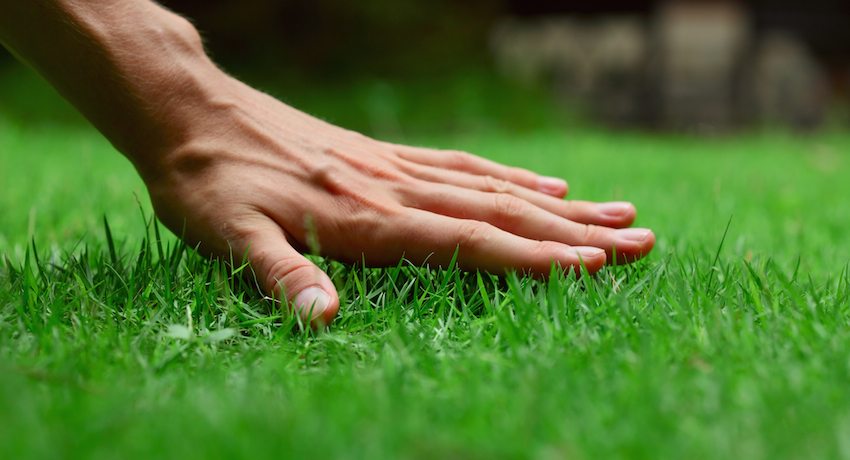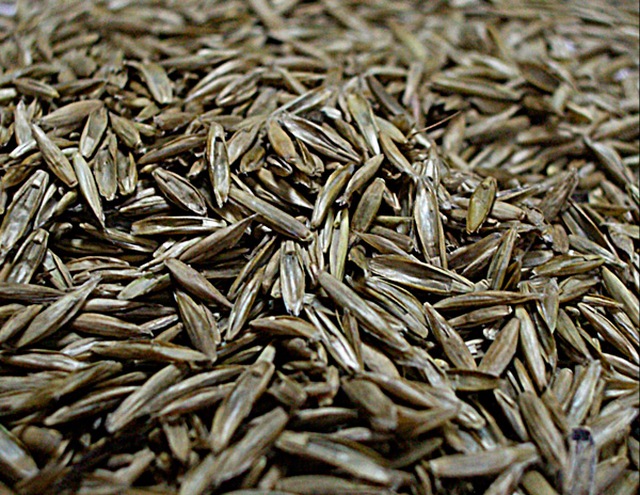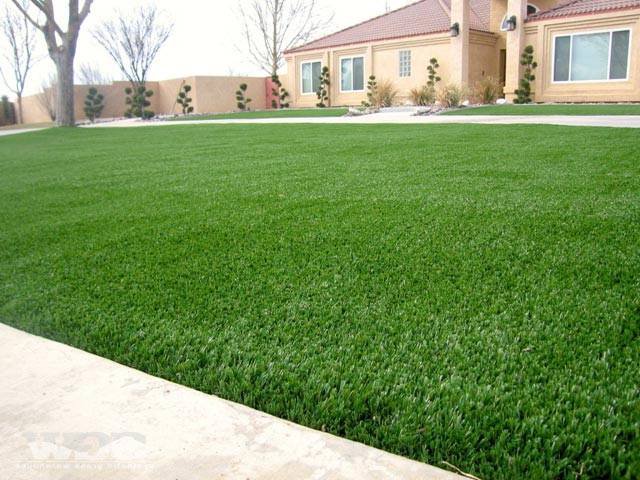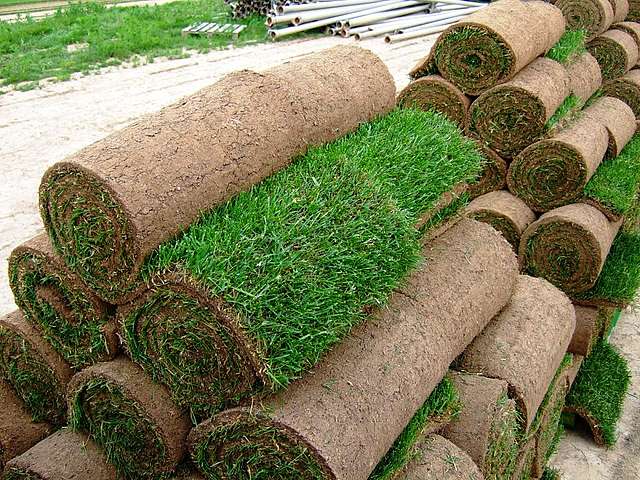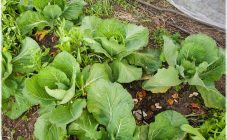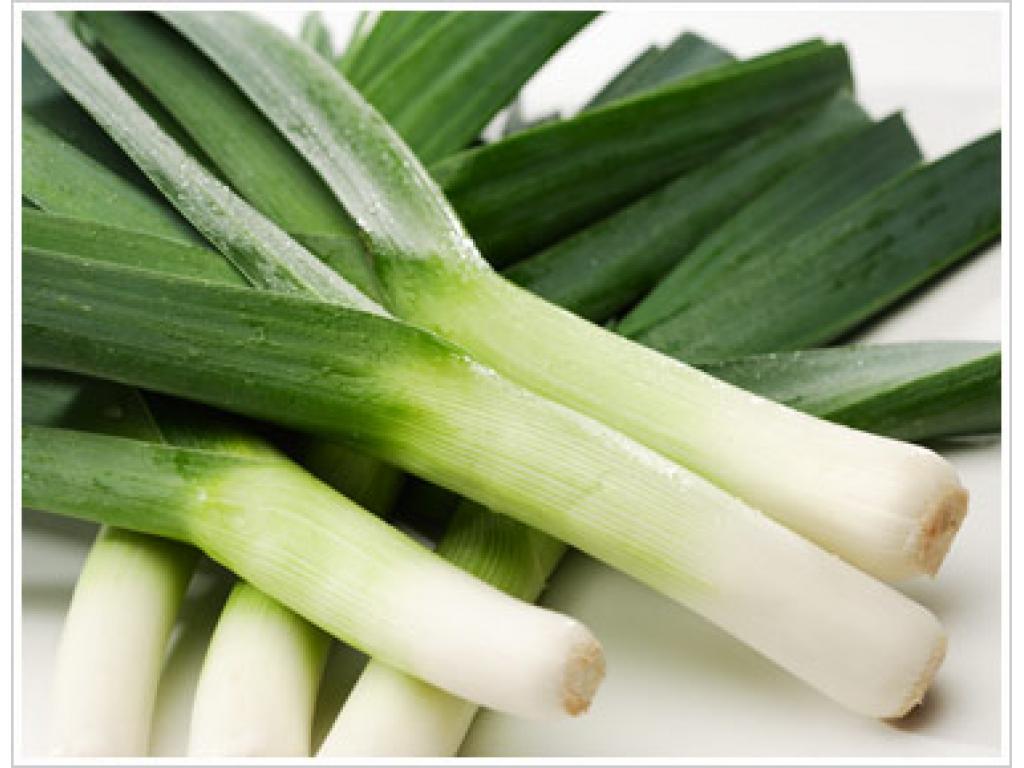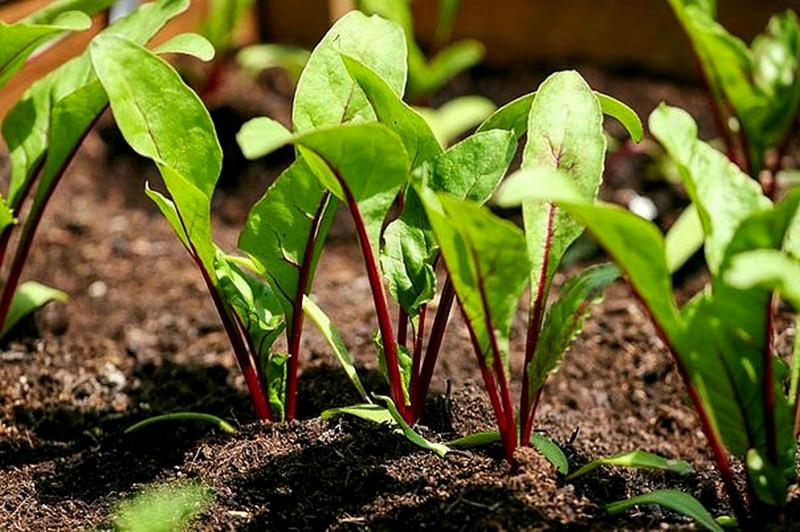Content:
To turn your site into a neat green meadow, you need to spend a lot of time and effort. In addition, you need to know exactly when to sow lawn grass (in autumn or spring), how to care for it, and what other points you should pay attention to.
Lawn grass: features
The selection of plants that can be used as lawn grass has been carried out over several generations. Preference was given to crops with the following characteristics:
- bright and rich color of greenery;
- soft foliage;
- resistance to trampling and damage;
- immunity to disease;
- drought resistance;
- the ability to form a "dense carpet".
The latter quality is considered especially important, since in its absence it is impossible to create a full-fledged lawn. Florists are not so picky about the height of plants, however, low-growing lawn grass requires much less maintenance (it does not need to be cut and leveled weekly). It will also be more far-sighted to choose perennial crops: they do not need to be planted again every year, and the growth activity of such varieties is noticeably lower.
Thanks to good watering and feeding, you can get uniform green shoots already 1.5-2 weeks after planting. In the future, they can be admired during each spring-summer period for several years. However, in order to avoid the development of diseases that can destroy most of the plants on the site, experienced gardeners get rid of the old lawn grass every 2-3 years and grow crops of other varieties in the selected area.
When is it better to plant lawn grass - in spring or autumn
From the point of view of many gardeners, the arrangement of the lawn can be carried out throughout the entire growing season. However, each season has its own advantages and disadvantages.
In autumn
Sowing lawn grass in autumn is the most preferred for several reasons:
- the absence of drying heat and sharp thermal fluctuations within a day (such conditions favor seed germination);
- optimal, almost unchanging level of moisture in the air and soil (the liquid necessary for growth accumulates due to abundant dew and prolonged rains);
- the growth rate of weeds is markedly reduced.
This option also has negative sides. For example, night frosts can ruin what a landscaper has sown. And the likelihood of this is relatively high.
Timely preparation of the site for the lawn begins 4-6 weeks before the greener plants the mixture. First of all, the selected place will need to be cleared of:
- garbage (for example, construction);
- cobblestones;
- branches;
- stump;
- unnecessary trees and shrubs;
- weeds (if there are too many of them, then you can treat the soil with herbicides 3-4 weeks before sowing).
Further, the site is carefully dug up, along the way removing the remnants of the roots of previously weeded out plants, large stones and other interfering objects.
If the soil is clayey, heavy, then it will need to be loosened and mixed with sand or fine gravel (0-4 mm). This will improve aeration. It is recommended to enrich sandy soil with nutrients by adding humus or compost to it.
The optimum acidity level for a lawn is 5.5-7 pH. If this indicator is overestimated in the soil, then it can be corrected by liming with dolomite flour.
Areas with excessively moist soil must be drained. This requires:
- Remove the fertile part of the soil.
- Pour pebbles, broken brick and stones in a layer of 15-20 cm.
- Raise the achieved level by another 8-10 cm, pouring sand.
- Level the surface by rolling it with a thick log.
- Return the humus back.
After 10-15 days (after the soil has settled), the area will need to be leveled by pouring earth into the holes and removing it from the bumps. After that, you can fertilize the soil with potash-phosphorus or special lawn compounds, distributing them with a rake.
The finishing touch is to compact the soil with a garden roller or log. To further stabilize the soil, you can water the area abundantly.
Autumn sowing of a lawn can be:
- Early. Seeds are planted in late August or early September (about 6 weeks before frost sets in). In this case, the plants will have time to develop a good root system, and they will cover the ground with a dense carpet. A haircut may even be required.
- Let's winter. Podzimny sowing is carried out in the last days of October or early November. The soil should already be frozen. In this case, the seeds undergo a natural process of stratification, which ensures the friendly appearance of spring shoots. However, sudden warming (for those cases when the temperature rises above +5 ° C) can lead to the appearance of sprouts, which will certainly die with the return of frost. Sub-winter planting is not suitable for areas located on a slope, since in spring crops can be washed away by melt water.
It is recommended to sow seeds on a dry, windless day, so they will not be spread around the site, and the seedlings will be uniform. In this case, the following technology must be observed:
- Moisten the soil a couple of days before the expected sowing day.
- Mix seeds with sand in a 1: 1 ratio.
- Spread the resulting mixture evenly over the area (first walk along, then - across, crossing the rows).
- Loosen the surface of the earth with a rake, simultaneously seeding the seeds to a depth of 1-2 cm.
- Tamp the soil with a roller and sprinkle with a layer of peat 1-1.5 cm thick.
- Water the soil carefully using a fine sprinkler.
In autumn, about 60-70 g of seed is consumed per 1 square meter of area.
In the spring
The spring option is good because during this period the germination of seeds improves for natural reasons - the daylight hours are lengthened, it becomes warmer. It is better if the lawn is sown in April, since moisture is still in the soil during this period. Later, from the end of April to the beginning of July, it is possible to sow lawn grass mixtures only if they are guaranteed regular and sufficiently abundant watering (from a watering can with a fine spray).
The soil for spring planting is prepared in the same way and at the same time as for autumn planting. Top dressing and intensive watering during spring planting begins in March. This allows not only to make the soil as suitable for the lawn as possible, but also to germinate all the weed seeds left over from last year, and then promptly remove unnecessary grass from the territory.
For 1 m², 30-50 g of seeds are required.It is also recommended to leave some of the seed in reserve in case there is a need for additional sowing. After completing the procedure, the land must be mulched with peat, humus and sand.
The first mowing is done when the lawn grass reaches a height of 6-10 cm.
Summer
Planting lawn grass in July or early August is fine. However, the consumption of seeds will be slightly higher than in spring, since some of it will burn out (accordingly, another part will have to be left for sowing bald spots, which may appear later). You will also need more intensive watering, since in July - August the soil dries up especially quickly.
The rest of the summer landing leaves a positive impression:
- with proper care, seedlings appear after a week;
- it is possible, before the snow falls, to see which places on the site remained empty and sow them before the vegetation period ends;
- the lawn will turn green for most of the fall (before the onset of frost).
It is preferable to plant a lawn at the end of summer, when the ground is still warm enough, and the humidity of the air and soil is already beginning to gradually increase.
Seedling care
The main part of lawn care activities involves the implementation of:
- glaze;
- cleaning;
- top dressing;
- cutting.
All these procedures are simple to perform, but they must be repeated regularly, otherwise the appearance of the lawn will noticeably deteriorate.
In winter, it is not recommended:
- walk on the lawn if the thickness of the snow cover is less than 20 cm;
- arrange a skating rink on the lawn area;
- cover the lawn with snow;
In the spring, the following actions are required:
- clear the area from debris, stones and leaves;
- comb the lawn with a fan rake;
- aerate and fertilize the soil;
- treat plants for fungal diseases by spraying them with fungicides;
- sow those areas that have remained bare;
- cut the lawn.
In the summer, the list is reduced to watering (done every two days), fertilizing and haircuts. With the onset of autumn, it will be necessary to sow the bare areas, fertilize the soil and aerate it.
Tools needed for planting and grooming
To prepare the soil, and then plant the lawn and take care of it, the following tools are required:
- metal and wooden rakes;
- wooden slats 1 m in length (several pieces for leveling the territory);
- mosquito net (used to protect seeds from exposure to sunlight);
- fertilizer (special lawn or complex): 50 g per square meter;
- fine spray watering can;
- Libra.
Of course, you will need high-quality seed material (preferably grafted) or several strips of rolled lawn.
Oats, rye and other cereals are often used for sowing. The best lawn grasses in the south:
- meadow bluegrass;
- meadow fescue;
- ryegrass.
Inhabitants of the northern regions are recommended to give preference to grass mixtures intended for Siberia and the Urals.
If desired, lawn crops can be independently combined in suitable proportions, checking the success of the selected combination on the site next to the summer cottage.
Thus, there is no deadline for planting a lawn. You can sow seeds at any time of the year, except for winter. When choosing the time to plant, you need to consider the advantages and disadvantages of each season of the year.
